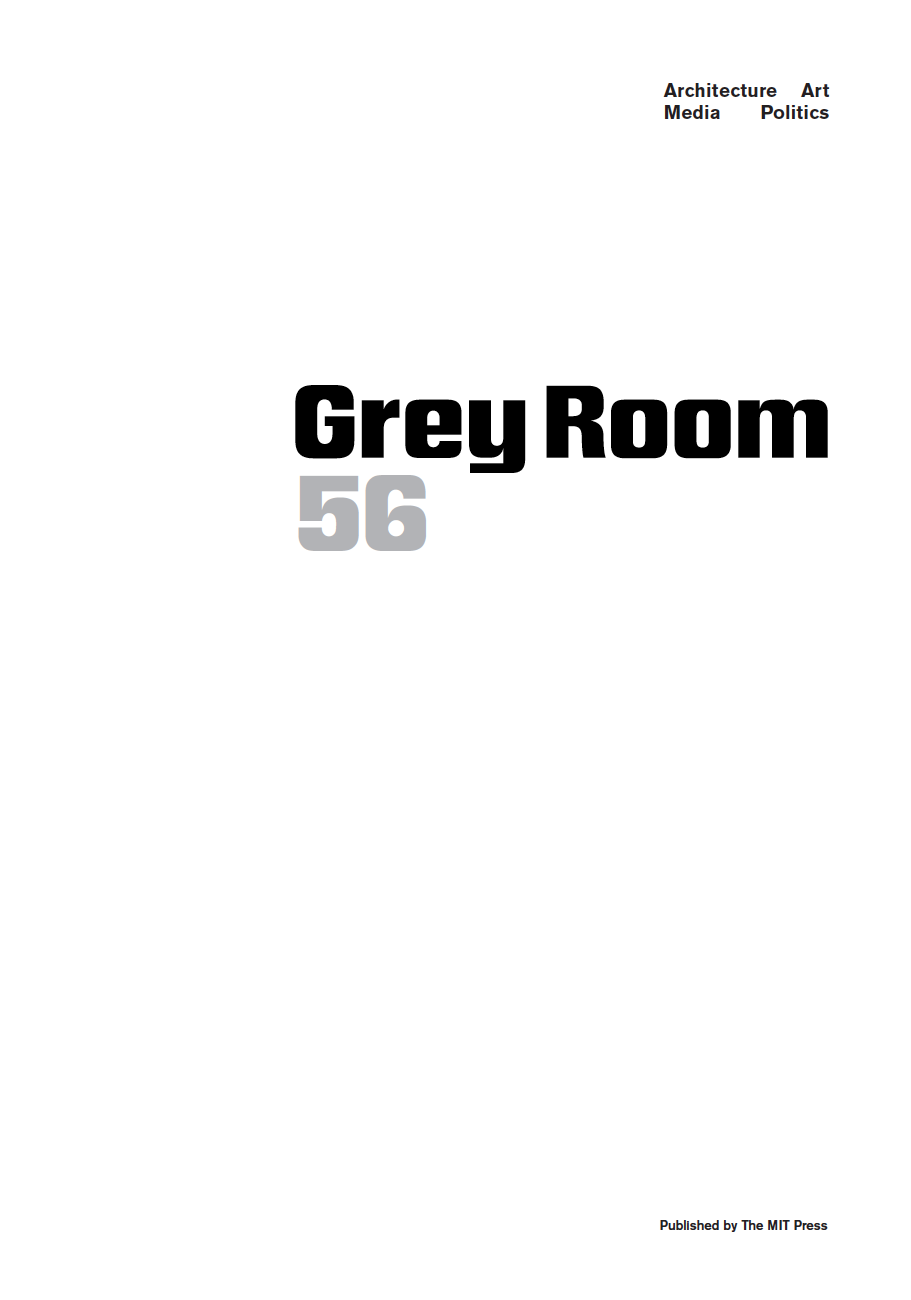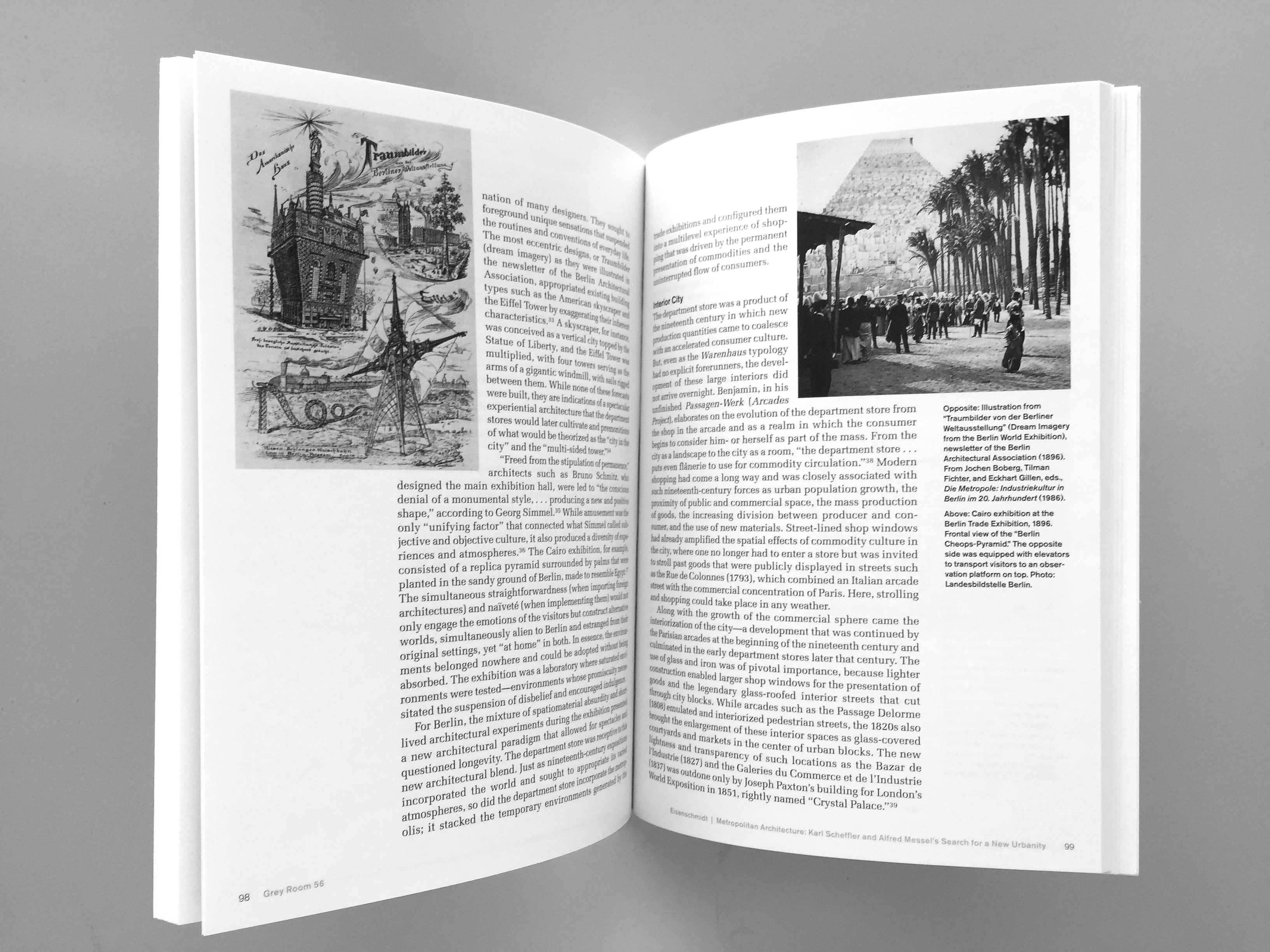
“Metropolitan Architecture: Karl Scheffler and Alfred Messel’s Search for a New Urbanity,” Grey Room #56 (Summer 2014): 90-115.
Just over a century ago, the art and architectural critic Karl Scheffler noted, “it is no accident that at the moment when the inherent organization of the metropolis is propelled by the pressures of economy, a new form of metropolitan architecture emerges for which the department store has become the symbol.” This definition of a modern architecture, intimately related to the modern city and its spatial and commercial pressures, was for Scheffler most vividly expressed in the Wertheim department store in Berlin, designed by Alfred Messel from 1896 to 1904. The Wertheim store, one of the largest in Europe and a place for the transient, theatrical, and fantastic experience of commerce, was, according to Scheffler, a key to understanding a new architectural paradigm. To him, the forces of the metropolis had brought about and shaped new spatial and organizational conditions, which architectural discourses at the turn of the century had failed to recognize. The new building types of the modern city, and the department store in particular, announced a new architecture of the metropolis, which Scheffler saw emerging only from within the current urban condition and poignantly called Großstadtarchitektur (metropolitan architecture). The intersection between the design of Messel and the theories of Scheffler has so far not been properly understood for its historical importance or its relevance in the trajectory toward an architectural urbanism of the metropolis. As such, this article is not merely a story of a theorist and a practitioner, which together help us to better understand how certain spatial experiences have come to be associated with the rise of urban commerce. More important, it proposes an alternative trajectory within architectural modernism, one that is not predicated on the narratives of tectonic functionalism or technological inventions but on architecture’s intimate relationship with the metropolis. These insights were not only taken up by critics and architects in Scheffler and Messel’s immediate vicinity but resonated in the ideas of an urban architecture that would captivate later-generations: from Ludwig Hilberseimer’s Großstadtarchitektur to the Office for Metropolitan Architecture.

